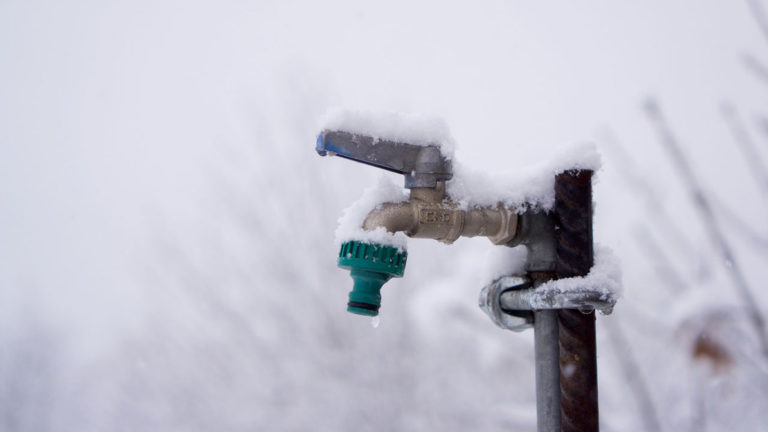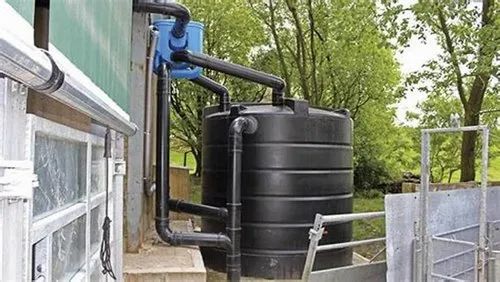Harvesting rainwater is a simple and effective way to reduce your reliance on municipal water supplies while also providing a sustainable source of clean water for non-potable uses.
By implementing a rainwater collection system, you can collect and store precious rainfall during the wet seasons, and use it for irrigation, flushing toilets, washing clothes, and other household purposes during the dry periods.
This eco-friendly solution not only helps conserve water resources but also lowers your monthly water bills.
We will walk you through the steps to set up a rainwater collection system at home.
Determine your rainwater collection goals
Before you begin, think about what you want to use the rainwater for. Do you want to collect it for irrigation, flushing toilets, or washing clothes? Knowing your goals will help you determine the size and complexity of your system.
Will you use it for irrigation, flushing toilets, or washing clothes?
Knowing your goals will help you determine the size and complexity of your system.
For example, if you want to use the rainwater for irrigation, you’ll need a larger storage tank and a more comprehensive piping system to deliver the water to your plants.
On the other hand, if you only need the rainwater for flushing toilets and washing clothes, a smaller storage tank and simpler piping system may be sufficient.
Knowing your goals will help you determine the appropriate filtration and treatment systems needed to ensure the rainwater is safe for use.
By taking the time to consider your goals, you can design a rainwater harvesting system that meets your needs and provides you with a reliable source of free water.
Choose a collection surface
The surface where the rainwater will be collected is important. You can use a flat roof, a pitched roof, or a rain garden. Make sure the surface is clean and free of debris.
The surface where rainwater is collected is a important factor in determining the effectiveness and safety of the rainwater harvesting system.
The surface should be clean and free of debris to prevent contamination of the collected water.
Flat roofs, pitched roofs, and rain gardens are all viable options for collecting rainwater, each with their own advantages and disadvantages.
Flat roofs are ideal for urban areas where space is limited, but they can be more prone to leaks and require more maintenance.
Pitched roofs are better suited for homes with more space, but they can be more expensive to install and maintain.
Rain gardens are a cost-effective and low-maintenance option that can also provide aesthetic benefits, but they may not be suitable for all climates and regions.
Regardless of the surface chosen, it is essential to ensure that it is properly sloped and equipped with a gutter system to direct the rainwater into the storage tank.
The surface should be protected with a layer of membrane to prevent any damage or leaks.
By carefully selecting the right surface for your rainwater harvesting system, you can ensure a reliable and safe source of water for your home.
Install gutters and downspouts
Gutters and downspouts are essential for collecting and directing rainwater to your storage tank. Choose gutters that are at least 5 inches wide and made of durable materials.
Gutters and downspouts play a important role in collecting and directing rainwater to your storage tank.
To ensure optimal performance, it’s important to choose gutters that are at least 5 inches wide and made of durable materials.
The wider gutters allow for more water to be collected and channelled towards your storage tank, while the durable materials help to withstand the elements and prolong the lifespan of the gutters.
When selecting gutters, look for materials such as aluminum or vinyl, which are lightweight, easy to install, and resistant to corrosion and cracking.
Consider the style of gutter you need, such as half-round or square, and ensure that they are securely fastened to your home to prevent sagging and water damage.
By investing in high-quality gutters and downspouts, you can efficiently collect and store rainwater for a variety of purposes, such as irrigation, toilet flushing, and washing machine input.
Select a storage tank
Your storage tank should be large enough to hold the amount of rainwater you want to collect. Consider using a plastic or metal tank that is UV-resistant and can withstand outdoor weather conditions.
When it comes to collecting rainwater, the storage tank is a important component that can make or break your system’s success.
Your storage tank should be large enough to hold the amount of rainwater you want to collect, taking into account factors such as your roof size, the amount of rainfall your area receives, and your desired usage rate.
Look for a plastic or metal tank that is UV-resistant and can withstand outdoor weather conditions such as extreme temperatures and humidity.
This will ensure that your tank can last for many years without degrading or becoming vulnerable to leaks.
Consider the weight and space requirements of your storage tank, as well as its ease of installation and maintenance.
By choosing the right storage tank for your rainwater collection system, you can ensure that you can collect and store a sufficient amount of water for your needs, while also ensuring the longevity and efficiency of your system.
Install a filtration system
To keep your rainwater clean and free of contaminants, install a filtration system. You can use a first flush device, which allows the first flow of water from the roof to be diverted, taking any debris and contaminants with it.
If you’re looking to keep your rainwater clean and free of contaminants, a filtration system is an essential investment.
One effective option is a first flush device, which allows the first flow of water from the roof to be diverted, taking any debris and contaminants with it.
This innovative technology ensures that only clean rainwater enters your storage tank, reducing the risk of contamination and providing you with a reliable source of potable water.
By installing a first flush device, you can rest assured that your rainwater is safe for drinking, cooking, and other household uses.
In addition to protecting the quality of your rainwater, this device also helps to prevent clogs and maintain the longevity of your gutters and downspouts.
With its simple installation and low maintenance requirements, a first flush device is a wise investment for any home or business that relies on rainwater harvesting.
Add a pump and piping
If you want to distribute the rainwater throughout your home, you’ll need a pump and piping system. Choose a pump that can handle the volume of water you expect to collect, and use PVC or CPVC piping that is resistant to UV rays and extreme temperatures.
To effectively distribute rainwater throughout your home, you’ll need a reliable pump and a durable piping system.
Start by selecting a pump that can handle the volume of water you expect to collect, based on factors such as the size of your roof and the intensity of rainfall in your area.
Look for a pump with a high flow rate and a robust construction that can withstand the demands of continuous use.
Once you have chosen a pump, you’ll need to install a piping system that can transport the water throughout your home.
PVC (polyvinyl chloride) or CPVC (chlorinated polyvinyl chloride) piping is an excellent choice, as it is resistant to UV rays and extreme temperatures, ensuring that your pipes will remain safe and durable over time.
These materials are also affordable, easy to install, and can be cut and joined with simple couplings and fittings.
Remember to properly size and install your pump and piping system to ensure optimal performance and longevity.
With the right equipment and installation, you can enjoy the benefits of rainwater harvesting for years to come!
Incorporate an overflow device
To prevent your storage tank from overflowing and causing damage, install an overflow device. This will allow excess water to be diverted to a drain or other location.
To avoid costly damage and ensure optimal storage tank performance, installing an overflow device is an indispensable measure.
These devices are specifically designed to divert excess water to a drain or other location, thereby preventing tank overflows that can cause damage to surrounding structures, contaminate soil, and compromise the integrity of the storage tank itself.
By installing an overflow device, you can rest assured that any excess water will be promptly and safely redirected, thereby avoiding potential hazards and mitigating the risks of overflow-related damage.
An overflow device can help you maintain a consistent water level within the tank, ensuring that your storage needs are met while minimizing the risk of overfilling.
When selecting an overflow device, it is important to consider factors such as the tank’s size, material, and specific overflow requirements to ensure optimal performance and protection.
By investing in a high-quality overflow device, you can enjoy peace of mind knowing that your storage tank and surrounding area are well-protected from the potentially disastrous consequences of overflow.
Test and maintain your system
Once your rainwater collection system is set up, test it regularly to ensure it’s functioning properly. Clean your gutters and downspouts, inspect your filtration system, and check for any leaks or other issues. Regular maintenance will keep your system running smoothly and ensure it provides you with a reliable source of clean water.
Regular maintenance is important to ensure your rainwater collection system operates efficiently and effectively.
Clean your gutters and downspouts: These components play a critical role in directing water towards your collection system.
Clean them regularly to remove leaves and debris that could clog the system.
Inspect your filtration system: Your filtration system should be inspected regularly to ensure that it’s functioning as intended.
Check for any blockages, holes, or damage that may need to be addressed.
Check for leaks and other issues: A thorough inspection should be carried out to identify any leaks, cracks, or other issues that may be compromising the system’s performance.
By performing regular maintenance, you’ll be able to
Keep your system running smoothly
Ensure a reliable source of clean water
Prevent contamination and reduce the risk of water-borne illnesses
Prolong the lifespan of your system and its components
Make informed decisions to upgrade or replace components as needed
By taking these steps, you’ll not only ensure the effectiveness of your rainwater collection system, but also the health and well-being of those who rely on it for their water needs.
Want More? Dive Deeper Here!
Hey there! If you’re the type who loves going down the rabbit hole of information (like we do), you’re in the right spot. We’ve pulled together some cool reads and resources that dive a bit deeper into the stuff we chat about on our site. Whether you’re just killing time or super into the topic, these picks might just be what you’re looking for. Happy reading!
- Rainwater Catchment and Reuse | Small Farm Sustainability
- Cooperative Extension | The University of Arizona
- Catalog Publications | OSU Extension Service
- CCE Distance Learning Center
- Saving and Using Rainwater – Solutions for Your Life – University of Florida, Institute of Food and Agricultural Sciences – UF/IFAS






